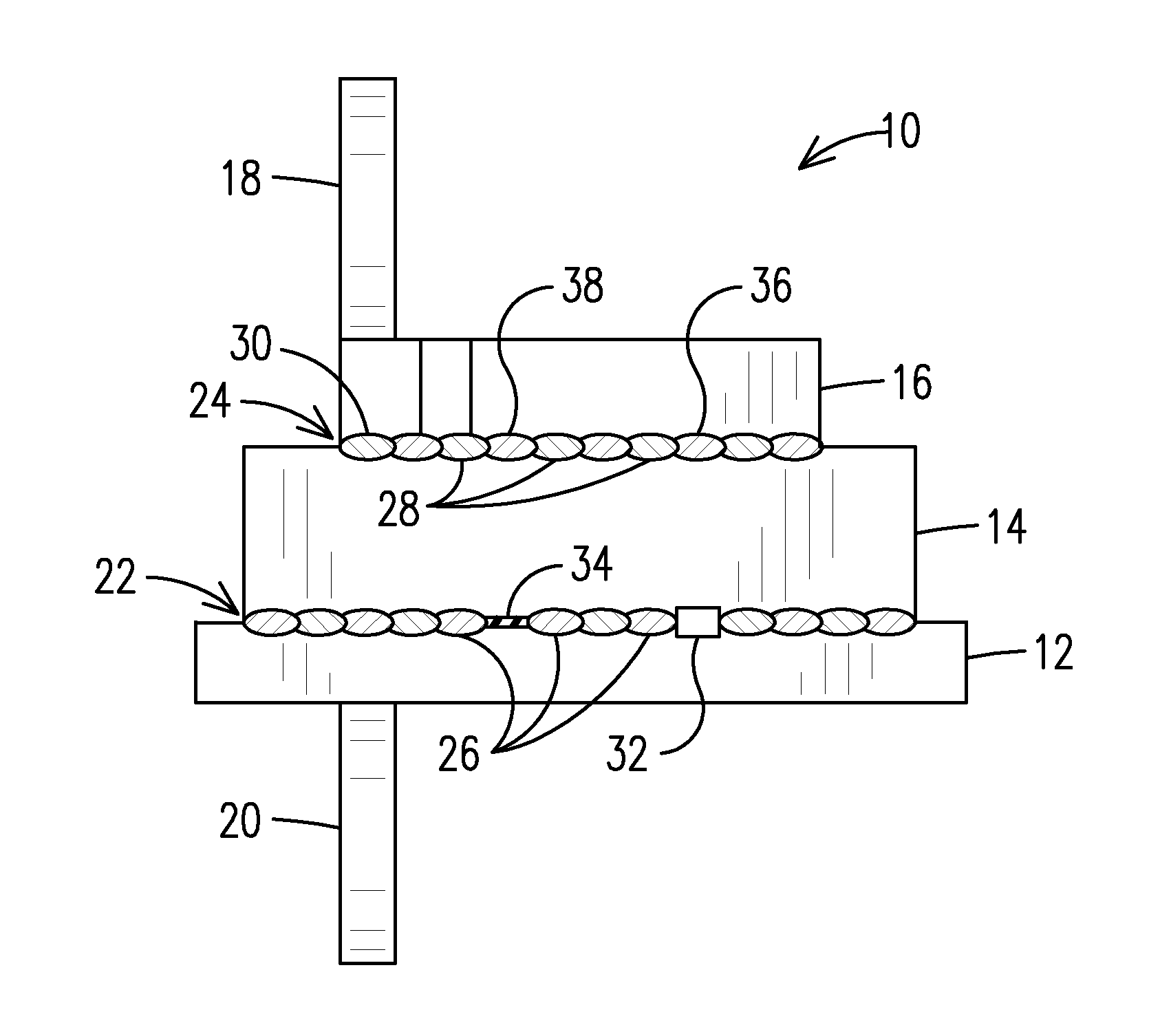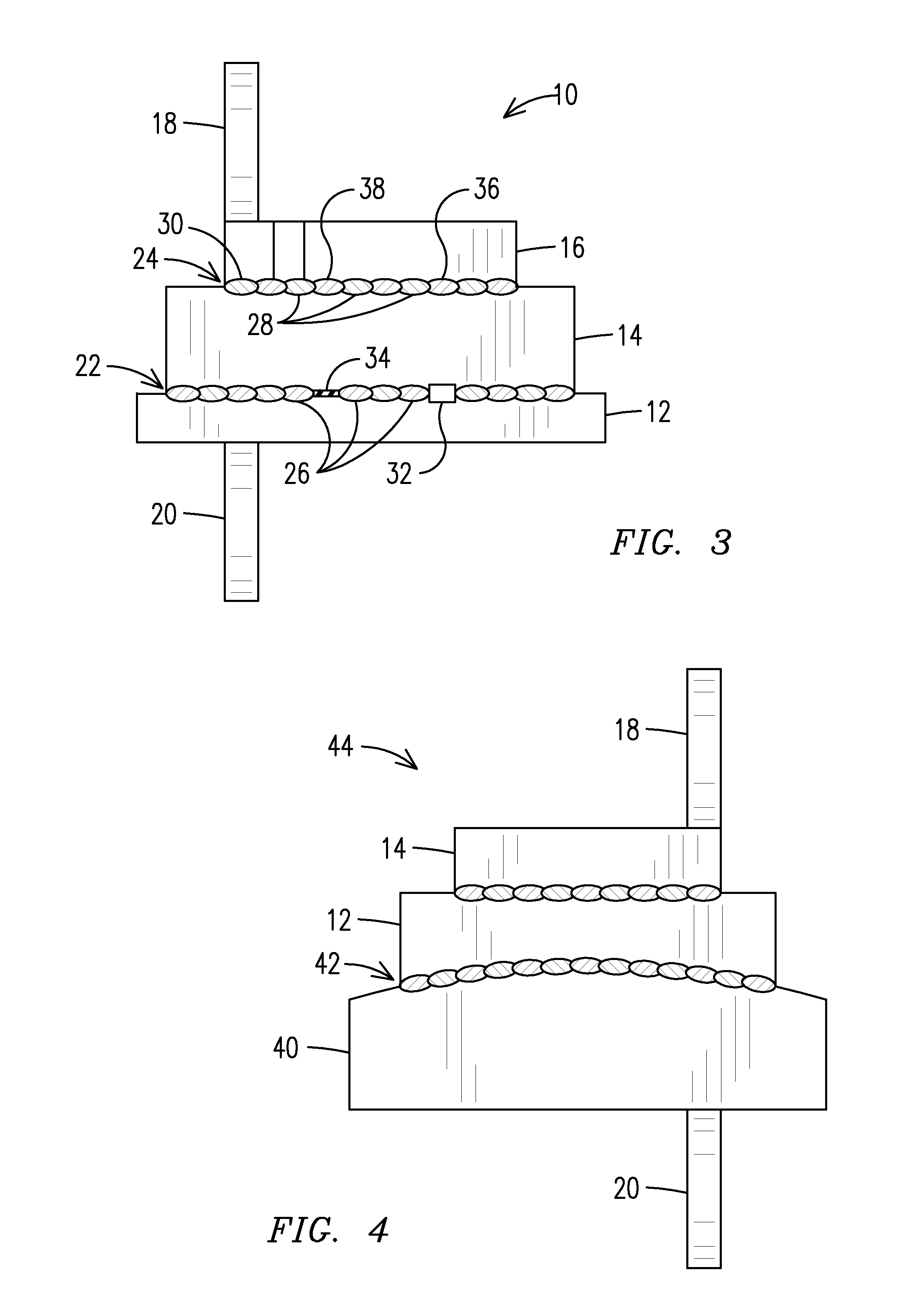Resistance weld additive manufacturing
a technology of additive manufacturing and resistive welds, which is applied in the direction of manufacturing tools, manufacturing apparatus, transportation and packaging, etc., can solve the problems of reducing the properties of many alloys, affecting the performance of the alloy, and affecting the quality of the alloy,
- Summary
- Abstract
- Description
- Claims
- Application Information
AI Technical Summary
Problems solved by technology
Method used
Image
Examples
Embodiment Construction
[0012]The present inventor has devised an innovative, yet simple, additive manufacturing process that is not subject to many of the limitations of conventional additive manufacturing techniques. The process uses resistance welding to join multiple layers of a substrate where each layer of the substrate forms a portion of an assembled structure. The assembled structure may be the final structure, or may be subject to subsequent machining to become a final structure.
[0013]Individual layers may be fabricated using conventional cutting processes, (e.g. milling, sawing, water jet, plasma, electro spark discharge etc) prior to being assembled, but any fabricating technique is acceptable. Each pre-assembled layer may be fabricated to a layer final shape such that no subsequent machining will be required, or it may be fabricated to a layer assembly shape in anticipation of subsequent machining of the assembled structure to reach a final structure.
[0014]Resistance welding involves straddling...
PUM
| Property | Measurement | Unit |
|---|---|---|
| thickness | aaaaa | aaaaa |
| resistance | aaaaa | aaaaa |
| area | aaaaa | aaaaa |
Abstract
Description
Claims
Application Information
 Login to View More
Login to View More - R&D
- Intellectual Property
- Life Sciences
- Materials
- Tech Scout
- Unparalleled Data Quality
- Higher Quality Content
- 60% Fewer Hallucinations
Browse by: Latest US Patents, China's latest patents, Technical Efficacy Thesaurus, Application Domain, Technology Topic, Popular Technical Reports.
© 2025 PatSnap. All rights reserved.Legal|Privacy policy|Modern Slavery Act Transparency Statement|Sitemap|About US| Contact US: help@patsnap.com



